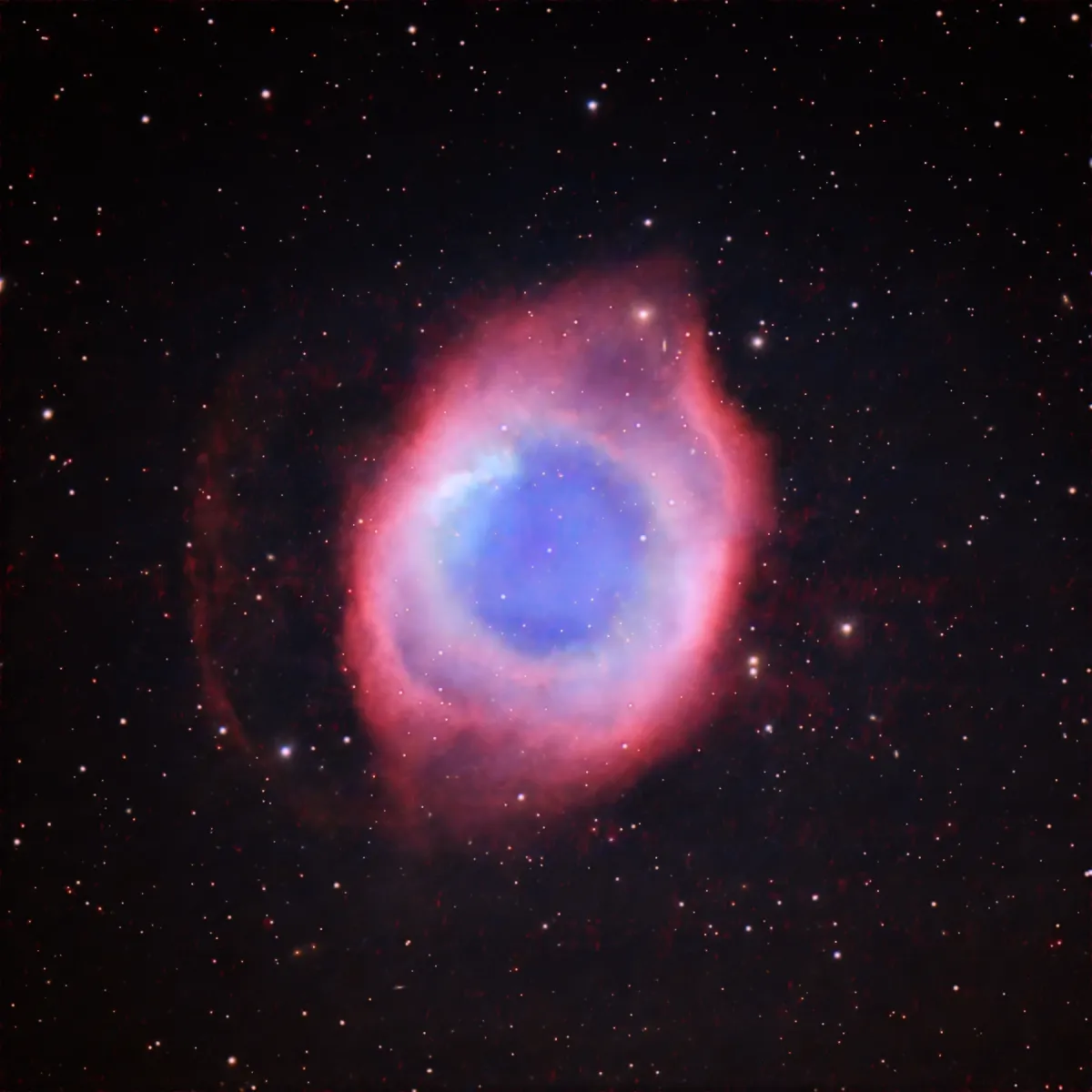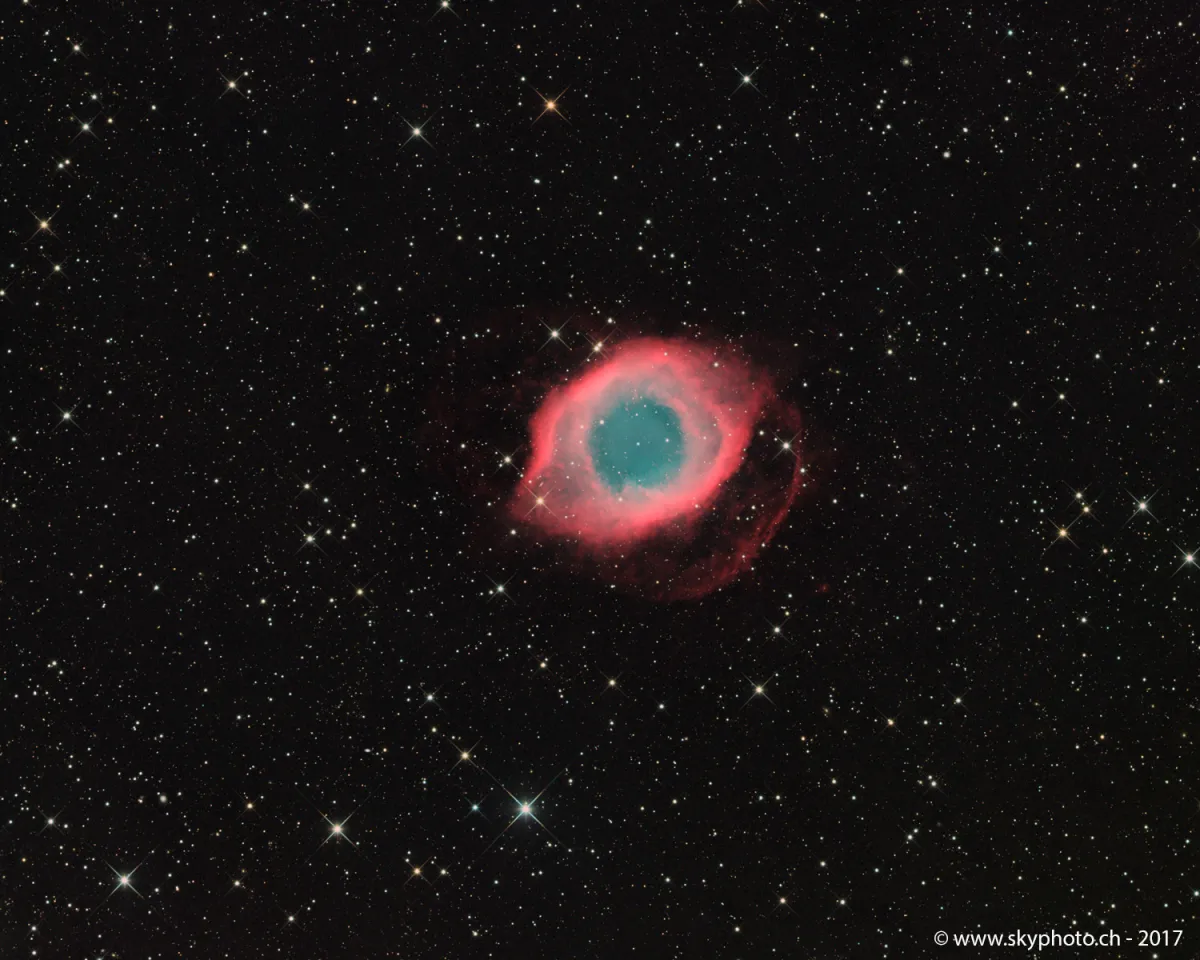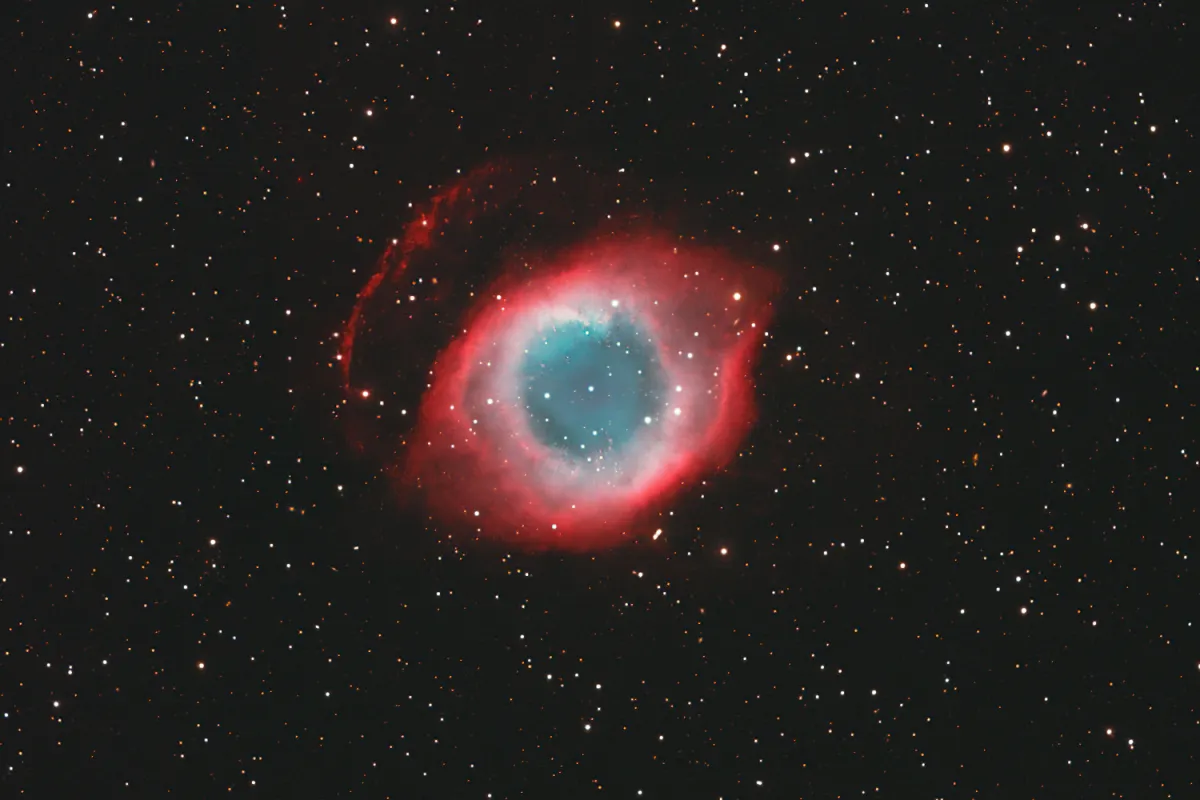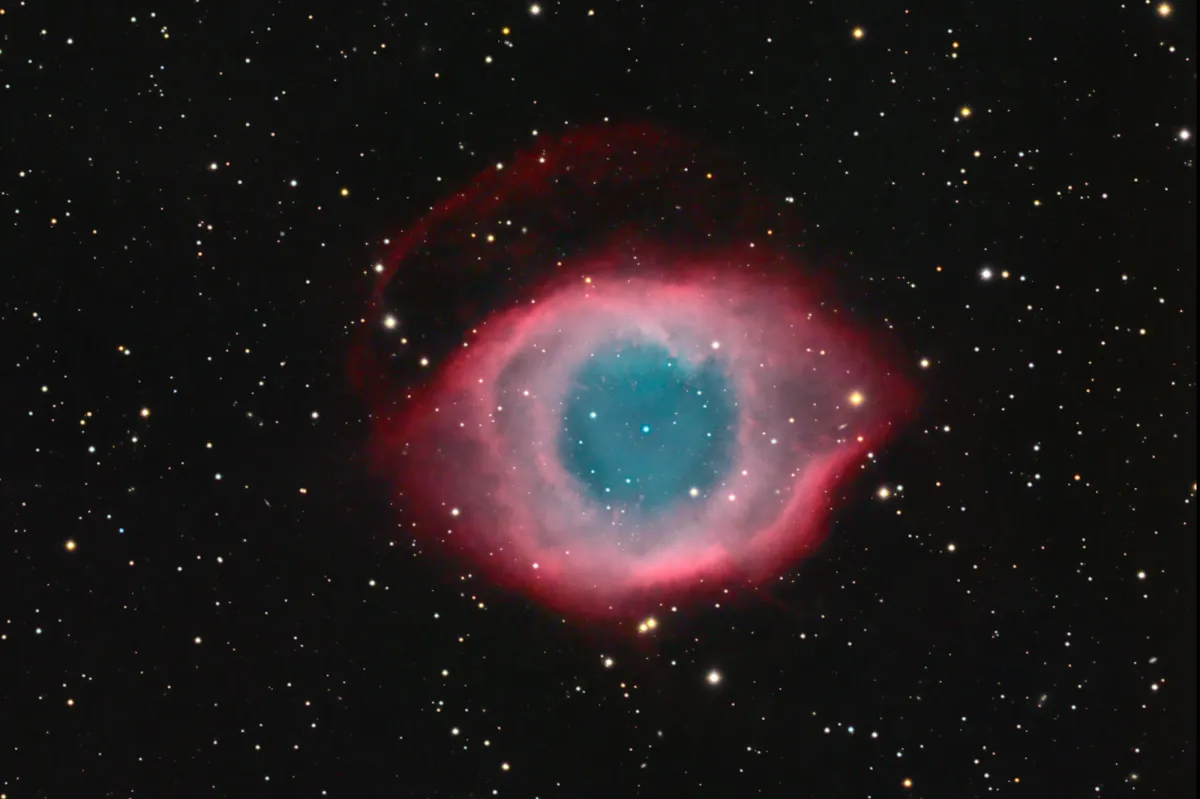Helix Nebula (NGC 7293)




History
This planetary nebula was discovered by Karl Ludwig Harding in 1823. It is only 500-700 light-years away and is one of the closest planetary nebulae. It's quite large, about 5.7 light-years across, appears to us about half the size of the Full Moon, but doesn't appear very bright, which is why it was initially missed by the two Herschels.
Well-known names for NGC 7293 are «Helix Nebula», «Caldwell 63», as well as more recently «The Eye of God» or «The Eye of Sauron» ... depending of the fairy tale you prefer.
Physical Properties
The physical properties of this planetary nebula are comparable to those of the Ring Nebula (M 57) in Lyra or the Cat's Eye Nebula (NGC 6543) in Draco. In the centre is a white dwarf star. The inner ring is thought to have formed 12'000 years ago and was then overtaken by the outer ring 6560 years ago. An expansion rate of 32 km/s was measured on the inner ring and 40 km/s on the outer ring by means of spectroscopy. [119, 196, 211]
| Designations | PN G036.1-57.1: NGC 7293, PK 36-57.1, ARO 17, VV 275, VV' 563 |
| Right Ascension (J2000.0) | 22h 29m 39s |
| Declination (J2000.0) | -20° 50' 15" |
| Dimensions | 980." (optical), 660." (radio) |
| Distance | 0.30 kpc |
| Radial Velocity | -28.2 ± 3.0 km/s |
| Expansion Velocity | 14.0 (O-III) 24. (N-II) km/s |
| C-Star Designations | AG82 441, CSI -21 -22270, GCRV 14134, PLX 5437, USNO 271, WD 2201 -21. 1 |
| C-Star Magnitude | U: 11.81, B: 13.10, V: 13.50 |
| C-Star Spectral Type | Hg O(H) |
| Discoverer | CURTIS 1918 |
Finder Chart
The Helix Nebula is located in the constellation Aquarius in a large area with relatively few bright stars for orientation. On 29 August it is in opposition to the Sun and crosses the meridian at local midnight. Due to its declination of -20°, the best observation time is in the months of May to January.
Visual Observation
320 mm Aperture: The bright ring is obvious. The ring thickness is about 1/4 of the diameter or the dark central spot is 1/2 of the diameter. The ring shape is slightly irregular. One part of the ring is even much weaker, giving the impression that it is a horseshoe. Fine, bright stars shimmer through the nebula. — 12.5" Ninja-Dobson, F:4.5 / TV-Panoptik 27mm, 53x, 1.28° und TV-Nagler 13mm, 111x, 0.74° / OIII-Filter, Eduard von Bergen
400 mm Aperture: In the 21 mm Tele Vue Ethos eyepiece, the nebula is already visible without an O-III filter. With the filter, it appears most beautiful when using the 16 mm Nagler eyepiece. The edge is noticeably brighter than the inner region, where some fine stars are twinkling through. — 400 mm f/4.5 Taurus Dobsonian, Glaubenberg, SQM 21.0, 11. 10. 2023, Bernd Nies
